
The Fat House or Greasy House (Unschlitthaus) is a historical building in Nuremberg that reflects and vividly tells about the history of the city.
The building was erected by Hans Beheim the Elder in 1490-1491 as one of the seven "granaries" of the city.
The building itself was notable for 76 skylights, which provided ventilation of the granary and were located in a "four-story" roof structure. Today, these hatches partly resemble and model history - windows, in the form of dormers, located on a high roof.
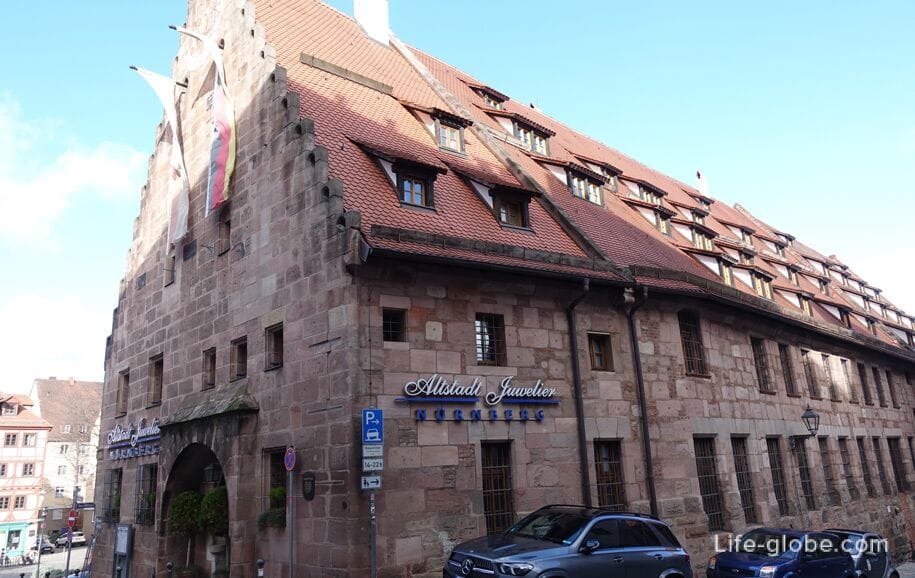
Between 1562 and 1835, the building housed the city monopoly authority for the sale of fat (lard). In this building, all butchers had to sell used fat. Up until the 19th century, lard was of great importance as a raw material for the manufacture of tallow candles, soap, automobile grease and shoe wax. Therefore, the "fat business" was very profitable and successful. Hence the name of the building - "Unschlitthaus", which means "Fat house" in German.
From 1839 to 1899, the building served as a school and calibration office, and in 1899 the city pawnshop moved here.
During the Second World War, the northern part of the Tallow House was destroyed by a hail of bombs (January 2, 1945). Later this part of the house was rebuilt. The southern part of the building, including the impressive roof structure, has been preserved in its original form.
Today, the historic building, as many years ago, impresses with the massiveness of the structure, carefully thought out and perfectly fitting into the overall architecture of the building with a Gothic portal on the south side, an openwork Gothic stepped pediment and an overhanging roof.

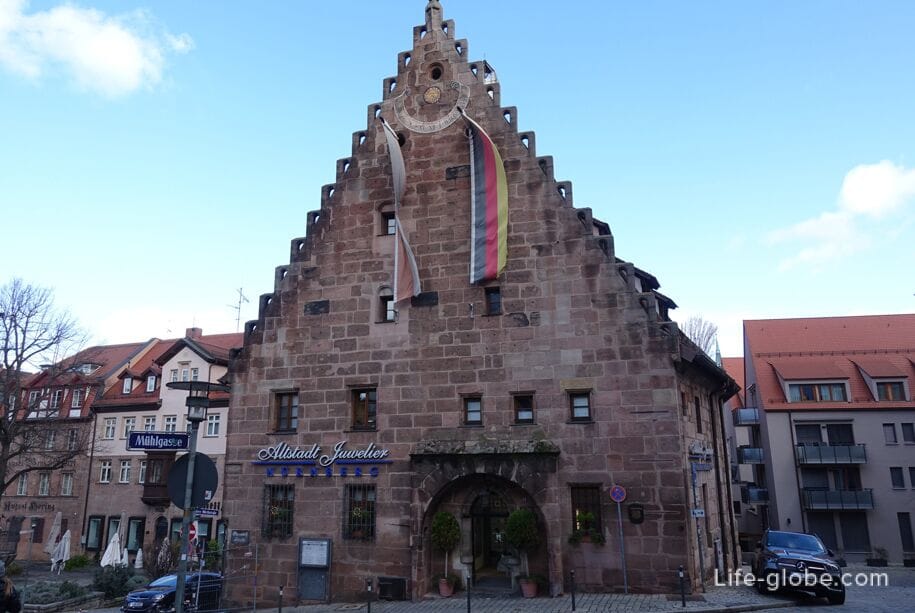

The northern wall of the building is directly incorporated into the wall, which is the protective structure of the Pegnitz River.
Near the Fat House, across the river, runs the famous historical Hangman's Bridge (Henkersteg).
In the photo, the Executioner's Bridge is in the center, the northern facade of the Fat House is on the right
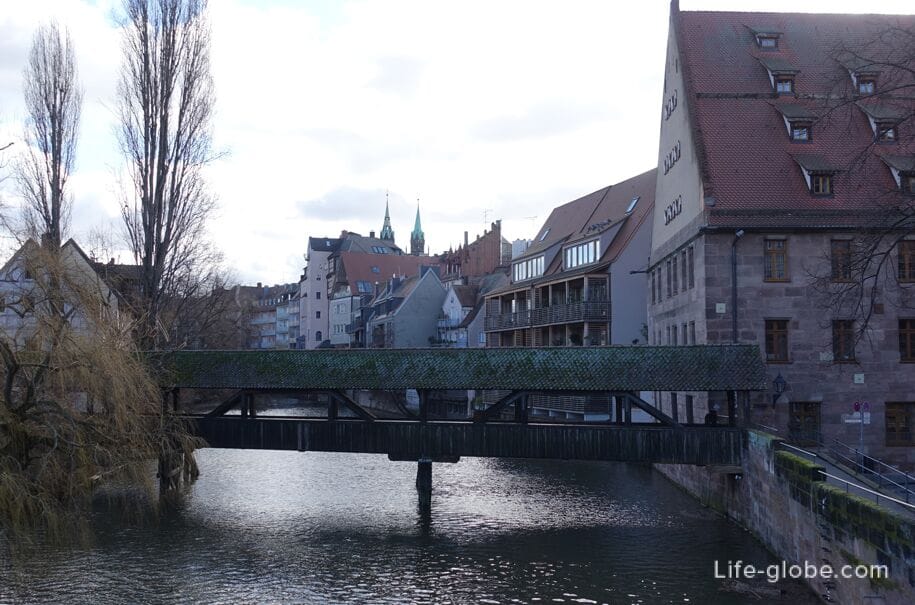
In the photo, the Fat House is on the left, just behind the bridge

A sign on the house

Today, the Fat House is used for government and commercial purposes.
The Fat House is located in the historical center of Nuremberg, on the south side of the Pegnitz River, on the eastern edge of the Fat Square (Unschlittplatz), which, in turn, is one of the most important historical attractions of Nuremberg and part of the tourist route - "Historical Mile of Nuremberg" (Historische Meile Nürnberg).
The address of the Fat House is 26 Obere Wörthstrasse (Obere Wörthstraße).
Near the Fat House, and therefore in the historical center of Nuremberg, you can stay:
The 3-star Hauser Boutique Hotel is located on the Unschlittplatz Square, near the Fat House and the Pegnitz River.
The hotel has a restaurant, free Wi-Fi, parking and room service.
The rooms are equipped with a flat-screen TV, a minibar and a private bathroom. Link to the hotel
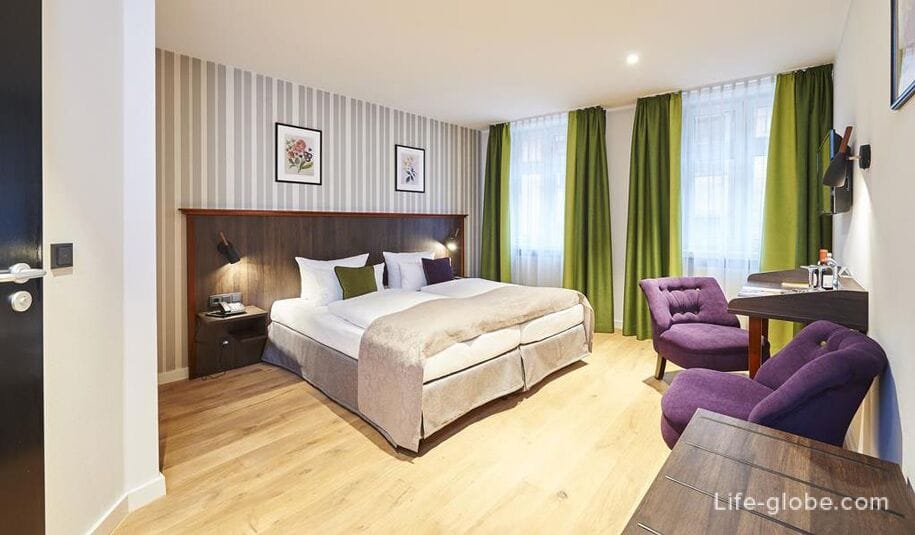
The Nuremberg Holidays Studio Apartment complex offers free Wi-Fi throughout, private parking and family rooms.
All rooms/apartments are equipped with a flat-screen TV. There is also a kitchenette, equipped with a microwave, toaster, refrigerator, stove, coffee machine and kettle. The private bathroom comes with a shower and a hairdryer. Link to the complex
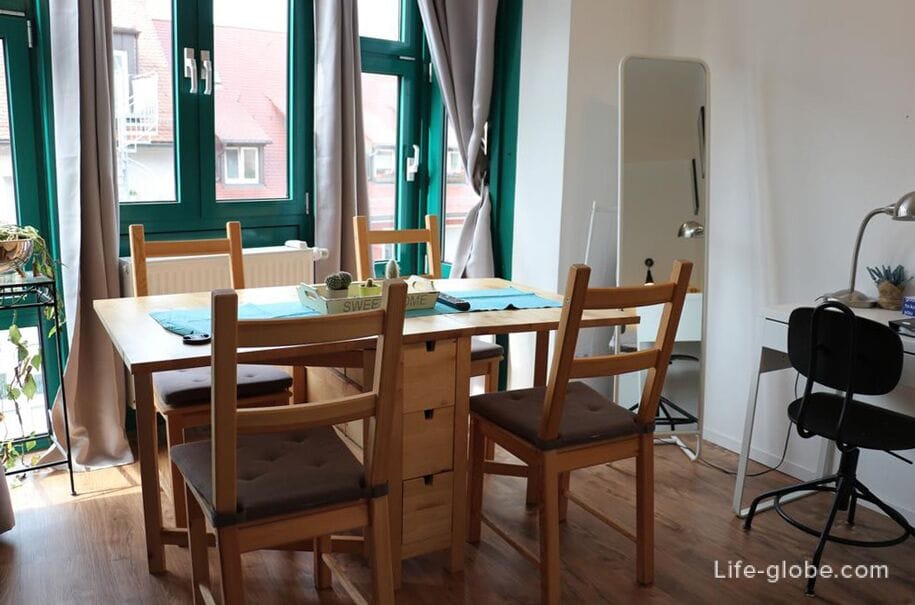
All accommodation facilities in Nuremberg, including in the city center and near the house and square, can be viewed and booked here